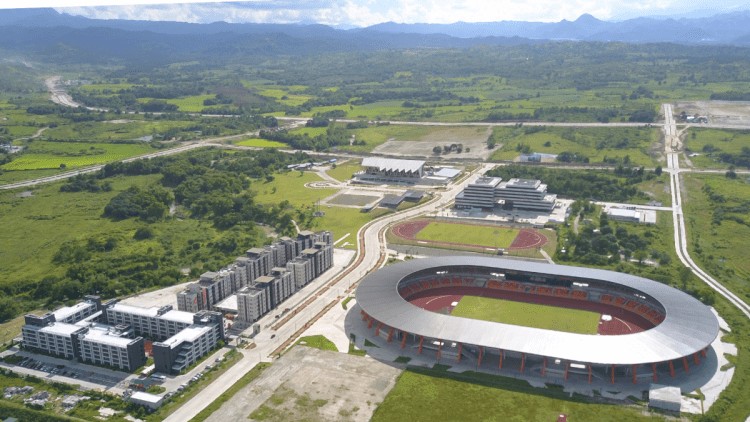
Rapid urbanization, climate change and persistent inequality have long hampered the Philippines’ bid in making green public spaces available and sustainable.
In the 9,450-ha New Clark City (NCC), however, the national government, together with the British Embassy Manila, is intensifying efforts to build sustainable, environment-friendly public parks easily accessible to the public.
This upcoming metropolis is one of the pilot areas of the Global Future Cities Programme (GFC) of the United Kingdom Foreign, Commonwealth and Development Office (FCDO), with the construction of a sprawling 44.8-ha green and sustainable open recreational space dubbed the NCC Central Park.
The program—which has carried out targeted interventions to encourage sustainable development, among others, in Southeast Asian countries—aims to alleviate high levels of urban poverty based on three thematic pillars: urban planning, transport and resilience, the British Embassy noted.
Sustainable urban planning
Upon its completion, the NCC Central Park will be eyed as a model project for the growth of greener, sustainable and more accessible spaces in the country.
This formed part of the September 2020 memorandum of agreement signed by the Bases Conversion and Development Authority (BCDA) and the British Embassy Manila, wherein both parties planned for the design of the NCC Central Park, as well as a housing project in the new metropolis.
“The [GFC] program will showcase NCC as a model for sustainable urban planning in the Philippines by enhancing green public space availability, promoting a nature-based approach to design, encouraging the use of non-motorized ways of transport and (by creating) mixed-use and inclusive developments,” the British Embassy said.
Inspired by global best practices and Philippine heritage, the public park will have a floating lakeside stage, pedestrian bridge, retention pond, multipurpose lawns, meditation alcoves, an outdoor gym and rain gardens.
Climate-responsive design
Set to be one of the biggest public parks in the country since the completion of the 58-ha Rizal Park in Manila, the NCC Central Park also boasts of a climate-responsive design that considers the topography, microclimates, biodiversity conservation areas, water resources and drainage networks in NCC to reduce urban environmental risks and achieve long-term resilience.
It will adopt a so-called tree conservation strategy that will ensure a “no-cut policy” for all threatened tree species and that all native and indigenous species that contribute to the character of the region will be protected.
According to the BCDA, the park may also act as a “carbon sink” by absorbing carbon dioxide from the atmosphere and converting it into oxygen, thus providing cleaner air to surrounding communities.
Ensuring access
Accessibility will not be an issue, too: NCC Central Park will be connected to surrounding neighborhoods and communities through a network of pedestrian and cycling paths, as well as interconnected modes of public transportation.
“Given its size and scale, the park can become an exemplar for planning green, inclusive, safe and accessible public space that could be replicated in other cities in the country. This is especially pertinent in the context of the Philippines, where public space is generally not adequately provided and protected,” the British Embassy explained.
As climate change and rapid urbanization continue to threaten the sustainability of the country’s diminishing open parks, as well as the safety of the marginalized, the British Embassy vowed that the NCC Central Park will foster local economic development and “enhanced, more equal access to jobs and economic opportunities.”
The construction of the NCC Central Park is set to begin in 2023 and completed by 2035, as the UK FCDO and the BCDA have yet to finalize the designs and full feasibility studies within this year.
Article and Photo originally posted by Inquirer last August 2, 2021 5:05pm and written by Meg Adonis.







More Stories
Vista Land Celebrates 50 Years with Sandiwa: An Event Honoring Leadership, Legacy, and the Filipino Dream of Homeownership
Vista Land Celebrates Love Month in Ilocos Region
Vista Land Bridges Cebuano Heritage and Progress with Valencia by Vista Estates